Art has always been about pushing boundaries — from cave paintings to digital installations. Today, one of the most exciting frontiers is Augmented Reality (AR) Art, a practice that fuses technology with creativity to reshape how we experience visual expression. With AR, artists are no longer confined to physical canvases or galleries. Instead, they create immersive, interactive works that blend seamlessly with the real world.
What is Augmented Reality Art?
Augmented Reality (AR) Art uses digital technology to overlay images, animations, or 3D objects onto the real environment. Unlike Virtual Reality (VR), which immerses viewers in an entirely digital space, AR enhances the physical world by adding digital layers.
In art, this means:
- Paintings that come to life through your phone’s camera
- Sculptures that transform when viewed with AR glasses
- Murals that tell stories through animations
- Interactive installations where audiences shape the artwork
In short, AR turns ordinary spaces into living canvases.
A Brief History of AR in Art
While AR feels futuristic, artists began experimenting with it in the early 2000s when smartphones became widespread. By the 2010s, museums and independent creators started using AR to enrich exhibitions. Today, AR art is displayed not only in galleries but also in public spaces, apps, and even social media platforms like Instagram and Snapchat.
Some notable milestones include:
- 2010s: Street artists began integrating AR into murals.
- 2017: The Smithsonian and other museums launched AR-powered exhibitions.
- Today: AR filters, AR NFTs, and immersive installations have become part of mainstream art culture.
Tools and Mediums of AR Art
Artists working with AR use a variety of tools, blending both traditional and digital practices:
- AR Software & Apps → Spark AR, Adobe Aero, Unity, ARKit, ARCore
- 3D Modeling Tools → Blender, Cinema 4D, Maya
- Hardware → Smartphones, tablets, AR glasses (like HoloLens or Magic Leap)
- Traditional Media → Murals, sculptures, or canvases enhanced with AR layers
This combination makes AR art a hybrid practice, where paintbrushes and code work side by side.
Forms of Augmented Reality Art
AR art comes in many forms, making it one of the most versatile mediums of our time:
- AR Murals and Street Art
- Murals that animate through an app or QR code.
- Example: Walls that “speak” or shift into surreal motion.
- AR Installations
- Gallery or outdoor setups where digital elements respond to audience movement.
- AR Museums and Exhibitions
- Artworks that extend beyond the frame, offering hidden layers, audio guides, or interactive 3D models.
- AR Filters and Social Media Art
- Instagram and Snapchat filters designed as creative, playful artworks.
- AR NFTs
- Collectible artworks that can be experienced in augmented spaces, merging digital ownership with immersive creativity.
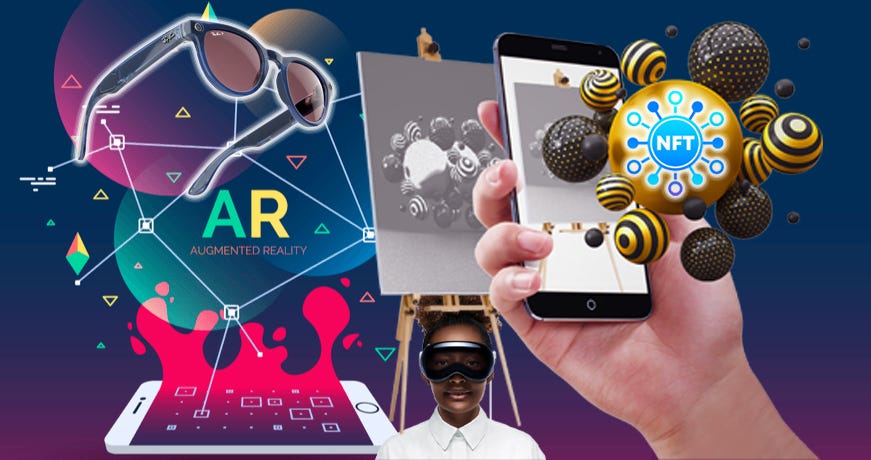
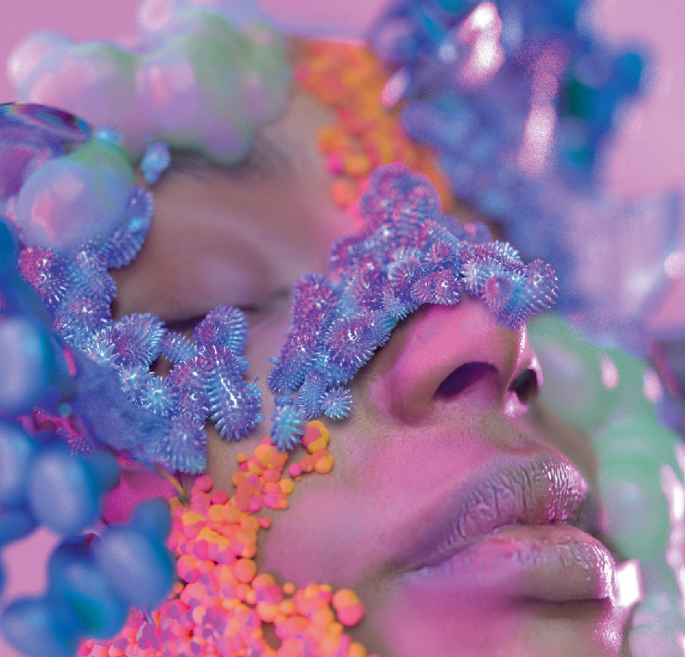
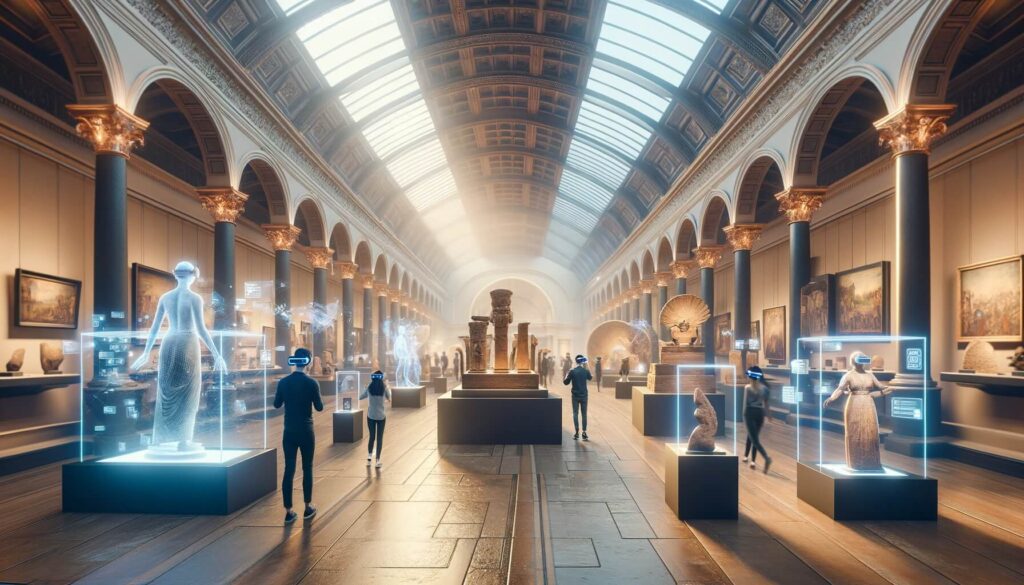
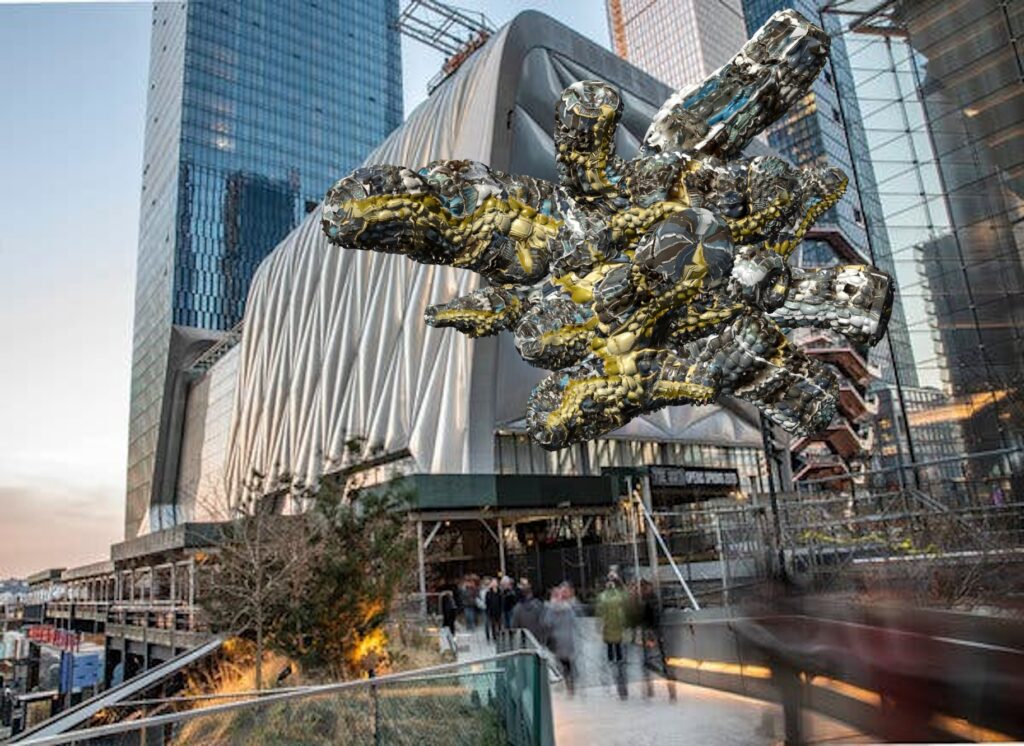
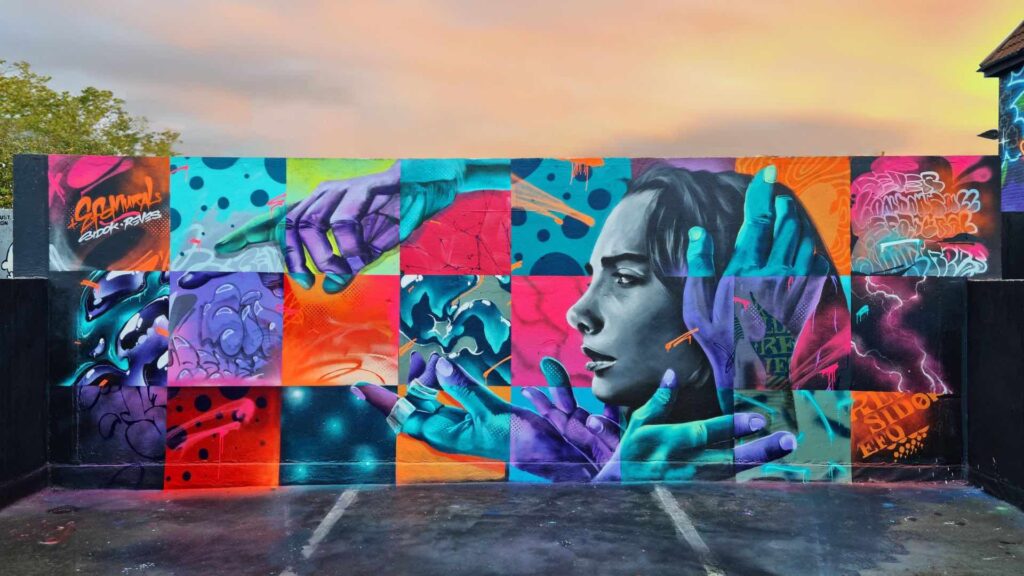
Why AR Art Matters
AR art is not just about novelty. It carries deep artistic and cultural significance:
- Accessibility: AR art can exist anywhere, from city streets to smartphones, making art more accessible to global audiences.
- Interactivity: Viewers no longer just look at art; they interact with it, shaping the experience.
- Storytelling: Artists can layer narrative, sound, and animation into static works.
- Breaking Boundaries: AR removes the limits of physical materials, offering infinite creative possibilities.
In essence, AR transforms art from something we observe into something we live through.
Examples of AR Art in the Real World
- Acute Art → A platform collaborating with artists like Olafur Eliasson and Marina Abramović to create AR installations viewable via smartphone.
- Pokémon GO-inspired Public Art → Cities experimenting with AR sculptures and digital landmarks.
- TeamLab → The Japanese art collective known for immersive exhibitions now expanding into AR-based experiences.
These examples show how AR is blurring the lines between digital culture, fine art, and everyday life.
Challenges and Criticisms
Like any emerging art form, AR art faces challenges:
- Technology barriers: Not everyone has AR-compatible devices.
- Ephemerality: AR works may depend on apps that could disappear in the future.
Despite this, AR continues to evolve as a serious and innovative medium in contemporary art.
The Future of AR Art
Looking ahead, AR art will likely become even more immersive and accessible. With the rise of wearable AR glasses and AI-powered design, artists will gain new ways to merge creativity with technology. Imagine entire cities where every wall, sculpture, or park has hidden AR layers waiting to be discovered.
In this future, art will no longer be confined to galleries. It will surround us, interact with us, and transform daily life into a canvas.
Final Thoughts
Augmented Reality Art is more than a trend — it’s a revolution. By blending the digital and the real, AR opens new doors for creativity, storytelling, and human connection. It challenges us to see art not just as something we look at, but as something we experience, interact with, and live inside.
“In the world of AR, every wall can hold a secret, every painting can move, and every street can become a gallery.”
As artists continue to explore this frontier, one thing is certain: Augmented Reality is redefining what it means to make — and experience — art.
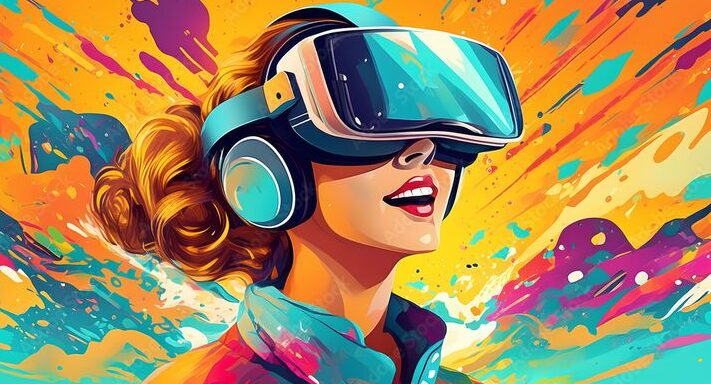
Leave a Reply